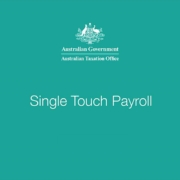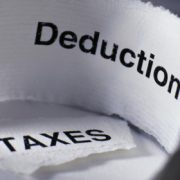Superannuation Guarantee Rate Change to 10% from 1 July 2021 – Employer’s Guide
What is Superannuation Guarantee?
The Superannuation Guarantee (SG) is the minimum percentage of a salary that an employer must contribute to an employees super fund. This percentage is legislated by The Australian Government and is controlled by the ATO.
The current SG percentage rate is 9.5% of employees “ordinary time earnings” or commonly known as OTE.
The SG percentage rate will change to 10% from 1 July 2021.
What is OTE?
Ordinary Time Earnings (OTE) is generally what your employees earn for their ordinary hours of work. It includes commission, loadings, allowances. It does not include overtime or reimbursements.
Who is eligible for superannuation?
Generally, superannuation contributions must be paid for, except:
- aged under 18 years of age and working 30 hours or less per week;
- non-resident employees paid for work done outside Australia;
- resident employees paid by non-resident employers for work done outside Australia;
- covered by bilateral superannuation agreements with other countries;
- certain senior foreign executives who hold certain visas or entry permits;
- paid to do work of a domestic or private nature for not more than 30 hours per week (part-time nanny or housekeepers for your personal home);
- members of the various Defence Forces (the Defence Forces has a scheme called Military Super);
- high-income earners with multiple employers who have ATO approval to opt-out of receiving super with an exemption certificate for a specific period of time.
What is changing?
The Superannuation Guarantee rate is increasing to 10%, effective 1 July 2021 and will then continue to increase until it reaches 12% on 1 July 2025.
| Period | Superannuation Guarantee (SG) % |
| 1 July 2018 – 30 June 2019 | 9.50% |
| 1 July 2019 – 30 June 2020 | 9.50% |
| 1 July 2020 – 30 June 2021 | 9.50% |
| 1 July 2021 – 30 June 2022 | 10.00% |
| 1 July 2022 – 30 June 2023 | 10.50% |
| 1 July 2023 – 30 June 2024 | 11.00% |
| 1 July 2024 – 30 June 2025 | 11.50% |
| 1 July 2025 – 30 June 2026 | 12.00% |
| 1 July 2027 – 30 June 2028 and onwards | 12.00% |
Source: https://www.ato.gov.au/rates/key-superannuation-rates-and-thresholds/?anchor=Superguaranteepercentage
Are contractors and self-employed business owners eligible for the Super Guarantee?
The law provides that contractors may need to be paid the SG if the service they provide is based on time, rather than an outcome. In addition, the work needs to be carried out by the contractor personally rather than by another company, trust or partnership.
The ATO offers a handy employee/contractor decision tool designed to help you decide whether you should treat a particular worker as an employee or contractor more generally.
For superannuation guarantee purposes, you can use its superannuation guarantee eligibility decision tool to help deduce whether you will need to pay SG contributions for the contractor.
If you’re a business looking to be proactive in meeting the new superannuation changes, get in touch with us at admin@simprotax.com.au
Employer’s Guide for Superannuation Guarantee
Due dates for SG Charge and SGC Statement
When you make SG contributions on behalf of your employees, your payment must be made in full by the quarterly due date, which is 28 days after the end of each financial quarter.
If you don’t meet this payment deadline, you are required to lodge an SGC Statement and pay the SGC by the due date in the following calendar month (see table).
| Quarter | Period | SG contribution due date | SG statement & charge due date |
| 1 | 1 July – 30 September | 28 October | 28 November |
| 2 | 1 October – 31 December | 28 January | 28 February |
| 3 | 1 January – 31 March | 28 April | 28 May |
| 4 | 1 April – 30 June | 28 July | 28 August |
If you know you will be unable to lodge your SGC Statement or pay the SGC by the due date, you can apply to the ATO for extra time.
Applications for an extension must be in writing and state why you need the extension. They must also be received by the ATO before the due date. Nominal interest will continue accruing until you lodge, with the general interest charge applying from your deferred payment date to the day you pay the SGC in full.
What are the SGC and SGC Statement?
If you do not pay super contributions for your employees by the quarterly due dates – or do not pay the full amount – you are required to pay an SG Charge (SGC).
You are also required to lodge an SGC Statement with the ATO. And to top it off, you are ineligible to claim a tax deduction for your SG contributions against your business income.
The SGC has three components:
- SG shortfall amount (including any choice liability), which is when you do not pay the full SG contribution for your employee. It is calculated using your employee’s salary or wages (not their ordinary time earnings)
- Interest on this amount,with thecurrent interest rate being 10%.
- Administration fee of $20 per employee, per quarter.
To report and rectify missing SG payments, you are required to lodge your SGC Statement by the due date (see below) and pay the outstanding SGC amount.
Even if you pay only a few days or weeks late, you still need to lodge an SGC Statement and pay the balance of the SGC.
If you’re a business looking to be proactive in meeting the superannuation requirements, get in touch with us at admin@simprotax.com.au










